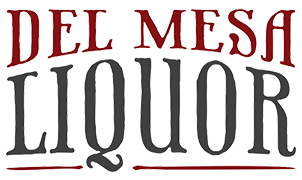Wine is a complex and sophisticated beverage that people have enjoyed for centuries. The winemaking process involves various stages, including fermentation, clarification, aging, and bottling. One of the most critical steps in the production of wine is aging.
Aging wine is storing wine in barrels or bottles for an extended period. The aging process helps to improve the quality and flavor of the wine. In this blog, we will discuss the power of aging and how it transforms wine, focusing on the role of time in this process.
What Is Aging?
Aging is storing wine in barrels or bottles for an extended period. Aging wine helps to enhance the wine'sxity, structure, and flavor. During the aging process, the wine interacts with the oak barrel or bottle, which imparts various flavors and aromas to the wine. The aging process also helps soften the wine's tannins, making it smoother and more enjoyable to drink.
The Role Of Time In Aging Wine
Time is a critical factor in the aging process of wine. The longer the wine is aged, the more its flavors become complex and refined; its flagging process allows the wine to mature and develop, enhancing its character and personality.
Wine can be aged for varying periods, from a few months to several decades. Depending on the winemaker's preference, the aging process can occur in barrels or bottles.

image: freepik
Barrel Aging
Barrel aging is a popular method of aging wine. The oak barrels used for aging wine are specially crafted to impart flavors and aromas to the wine. The oak barrels also allow for the slow infusion of oxygen into the wine, which helps to soften the tannins and improve the wine's texture.
The amount of time the wine spends in the barrel depends on the winemaker's preference and the type of wine being aged. For example, red wines typically require longer aging times than white wines.
Bottle Aging
Bottle aging is another method of aging wine. This method involves storing the wine in a bottle for an extended period. The wine is typically corked to prevent oxygen from entering the bottle, which can cause the wine to spoil. The aging process in the bottle allows the wine to develop its flavors and aromas, as do the tannins. The amount of time the wine spends in the bottle depends on the winemaker's preference and the type of wine being aged.
How Aging Transforms Wine
The aging process transforms wine in several ways. First, aging helps soften the wine's tannins, making it smoother and more enjoyable to drink. Tannins are compounds found in the skins, seeds, and stems of grapes, giving the wine its astringency and bitterness. As wine ages, the tannins break down, resulting in a smoother, more balanced wine.

Image: iStock
Second, aging allows the wine to develop complex flavors and aromas. During the aging process, the wine interacts with the oak barrel or bottle, which imparts various flavors and aromas to the wine. For example, oak barrels can add vanilla, spice, and toast flavors to the wine. Bottle aging can add flavor to dried fruits and honey to the flavors of wine.
Third, aging can improve the structure of the wine. The structure of wine refers to its balance of acidity, tannins, and alcohol. As wine ages, the components of its structure become more integrated, resulting in a more balanced and harmonious wine.
The Power of Aging Liquor
Aging is not just limited to wine. Many types of liquor can also benefit from aging. Spirits such as whiskey, rum, and brandy are often aged in barrels for extended periods to improve their flavor and complexity. Like wine, liquor's aging process allows it to interact with the barrel and develop new flavors and aromas.
Whiskey, for example, is often aged in oak barrels for several years. The barrel imparts flavors, caramel, and spice to the whiskey flavors, creating a unique and complex flavor profile. Rum is another type of liquor that is commonly aged in barrels. Barrel-aged rum has a rich, smooth flavor and can have notes of vanilla and oak.
Brand notes, made by distilling wine, can also benefit from aging. Brandy is often aged in oak barrels for several years, which helps to mellow the harsh alcohol flavors and create a smoother, more complex spirit. Barrel-aged brandy can have notes of vanilla, oak, and dried fruit.
Conclusion
In conclusion, the power of aging is a crucial factor in the production of high-quality wine and liquor. The aging process allows the wine or liquor to mature and develop, enhancing its character and personality.
Time is a critical factor in the aging process, with longer aging times resulting in more complex and refined flavors. Whether it's wine or liquor, the aging process is essential in producing a premium quality beverage.
 Log in
Log in
 My Wishlist
My Wishlist Reward Program
Reward Program Corporate Gifts
Corporate Gifts Customer Help
Customer Help


